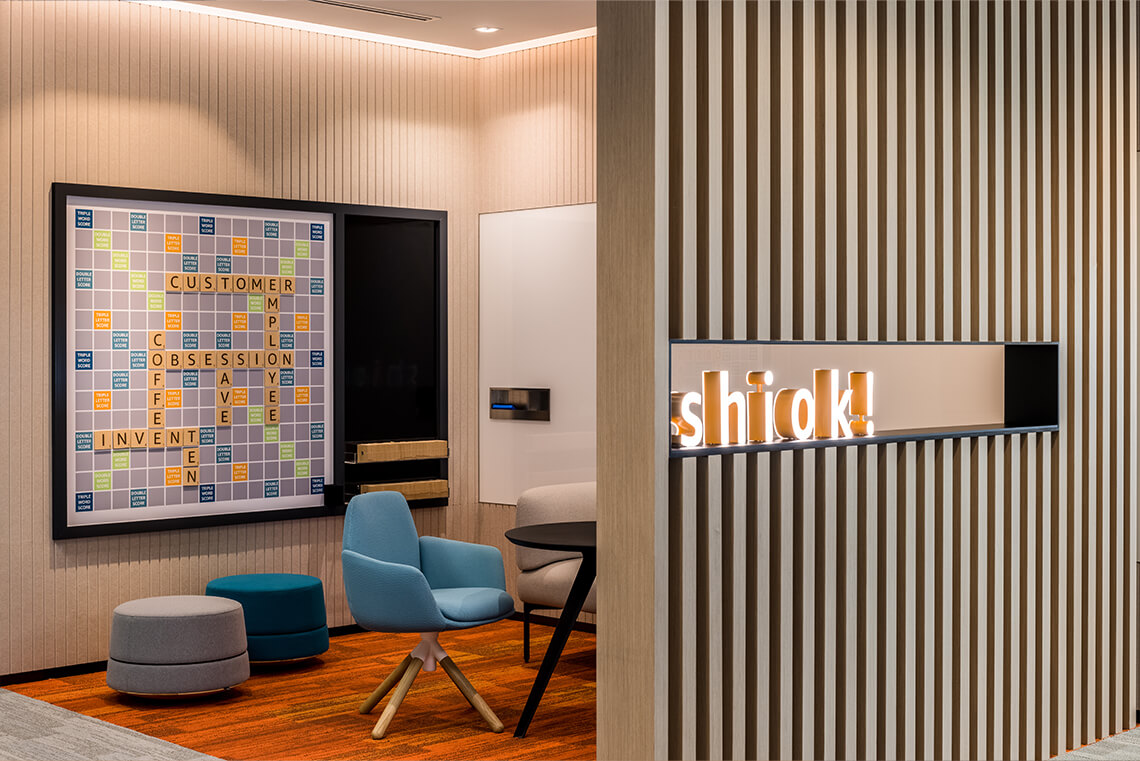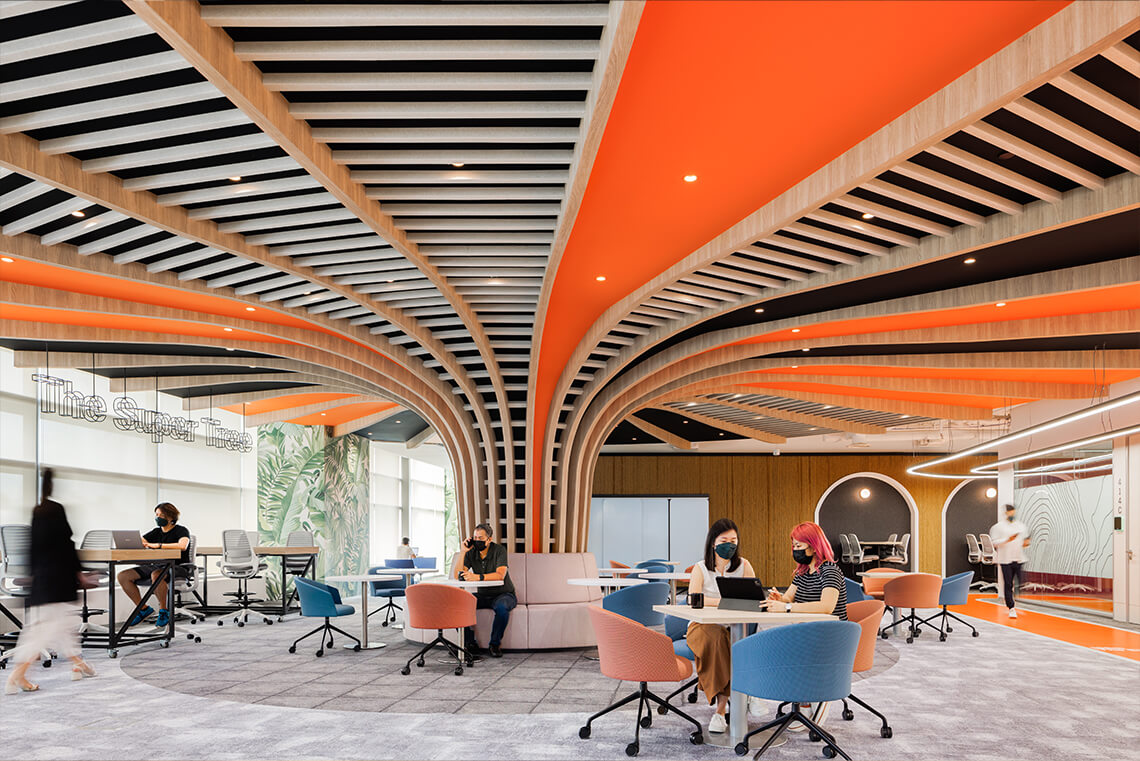In all construction projects, it is crucial to select the right delivery method to achieve long-term success. Design and Build (DB) and Design Consultancy (DC) are the two primary delivery methods used in the construction process of all building projects, especially offices. While each method has its own advantages, there’s a fair share of challenges that need attention, especially in the construction phase of the project delivery.
In this article, we have delved deeper into the nuances of both approaches, providing a comprehensive guide to settle the design and build vs. design consultancy debate. At the end of it, you can discern which one suits your project needs and choose accordingly.
Key Points
- While design and build is a streamlined approach where a single entity handles both design and construction, design consultancy involves separate contracts for design and construction, allowing for more detailed planning but potentially leading to coordination issues.
- Design and Build simplifies communication and accountability with a single point of contact, which ensures time and cost efficiency as projects are delivered at a faster rate and reduced costs. It also fosters teamwork between designers and builders, ensuring that the design is in line with the owner’s goals. Out of the two project delivery methods, DB is regarded as more beneficial for construction projects, as it addresses the growing complexity and need for efficient management.
- Design consultancy, on the other hand, allows for in-depth research and tailored design solutions because of the specialised expertise available. It also enhances project quality by promoting flexibility, which lets owners choose different contractors for each phase.
- While DB has drawbacks like limited design flexibility, which limits design modifications during construction, DC has longer project timeline problems due to the separation of design and construction phases. Moreover, it’s problematic to balance design aesthetics with construction practicality in DB while DC requires complex coordination between different entities.
Design and Build: A Unified Approach

Design and Build (DB) is a project delivery method where a single entity, often referred to as the design-builder, is responsible for both the design and construction phases of a project. In this integrated approach to project delivery systems, there’s no separation of the design and construction phases, which is often the case in the traditional method or Design Consultancy (DC). The increasing complexity of construction projects and the evolving demands of the construction industry have led owners to adopt Design and Build methods to leverage expertise and enhance project efficiency.
We will discuss aspects of the DB process along with its advantages and drawbacks in the next subsections so that you can settle the design and build vs. design consultancy debate and choose the best option.
The Design and Build Process
If you are looking to go for the design and build process, then you need to consider the following phases:
- Team Selection: In DB, the owner selects a design-build team based on their experience, skills, and understanding of the project’s vision and budget.
- Pre-construction: During this phase, the design-build team collaborates to understand the owner’s goals, challenges, and vision. They assess the site and existing structures to maximise efficiency. Early involvement of teams in the design process helps in better risk mitigation and project efficiency.
- Architectural Design: In this DB process phase, the team develops a design that aligns with the project’s functional and aesthetic requirements while also considering cost savings and productivity.
- Construction: With the design phase often overlapping with construction, the project progresses rapidly, with all team members working towards the same goals.
- Post-construction: The team provides an overview of the project deliverables, along with training materials for the owner’s personnel.
Benefits of Design and Build
To fully utilise the design-build process in your construction projects, you must be aware of the many benefits it provides, like single contracts, cost-effectiveness, and reduced risks. Here’s how the design-build method is beneficial for businesses:
- Single Point of Contact: DB offers the convenience of dealing with one entity for both design and construction. This streamlines communication, reduces misunderstandings, and enhances accountability. As all aspects of the project are managed by a single team, it ensures that everyone is on the same page, reducing the risk of conflicts.
- Time and Cost Efficiency: One of the most significant advantages of DB is the potential for time and cost savings. The integration of design and construction allows for faster project delivery. Overlapping phases mean that construction can begin before the final design is complete, accelerating the timeline.
Additionally, in this method, project costs are estimated at an early stage, which makes it easier for businesses to manage the budget allocation, avoiding any overruns. The integration of design and construction services minimises risks for project owners and streamlines project schedules by maintaining a single point of responsibility through a unified single contract. - Collaborative Process: The design-build construction method fosters innovation and customisation through its collaborative nature of work. Since designers and contractors work together from the beginning, they can identify and address potential issues early on. This reduces the likelihood of costly design changes or delays during the construction phase.
- Reduced Risk for Owners: With DB, the design-builder assumes responsibility for any design errors or construction defects. This reduces the owner’s risk, as they do not need to mediate disputes between designers and contractors.
Challenges of Design and Build

While the advantages of the design-build process make it the most exploited project delivery method in the construction industry, there are certain challenges to it. This includes:
- Limited Design Flexibility: The Design-Build construction method limits the owner’s ability to make significant design changes once construction has begun. The integrated approach requires a clear vision from the start, as major alterations can disrupt the project timeline and budget.
- Potential for Compromise: In some cases, the need to balance design aesthetics with construction practicality can lead to compromises. In the design-build process, the designer-builder focusses on efficiency and cost-effectiveness, which might sometimes overshadow the pursuit of unique or innovative design solutions.
Additionally, when a design-builder is closely affiliated with a construction company, it might restrict their ability to innovate in design, potentially compromising the quality and complexity of projects.
Design Consultancy Services: A Specialised Approach

Design Consultancy (DC) represents a more traditional approach to project delivery, where the design and construction phases are handled by separate entities. Unlike the single contract in the design-build process, here the owner signs a contract with a design firm to create the project’s design and then contracts a construction firm to execute it.
Hence, in this method, understanding the type of building projects and the role of architect-led design is crucial in managing risks and achieving successful outcomes. This is especially needed for less-prescriptive designs.
The design consultancy process
Unlike the design-build construction method, the DC process involves several distinct phases:
- Design Development: In the first phase, companies hire a design consultancy firm to develop detailed plans and specifications based on the project’s goals. This phase includes extensive research, measurement, and analysis to ensure that the design meets the owner’s needs.
- Tendering Process: Once the design is complete, the project goes out to tender, where construction firms bid to build it. The owner selects a contractor based on price, experience, and other criteria, entrusting them to execute the design created by the design firm.
- Construction Phase: The chosen contractor executes the construction based on the design firm’s specifications. The design consultancy may remain involved to oversee the construction and ensure that the design intent is followed. During the construction phase, streamlined communication and coordination between the design-build team and the owner are crucial to minimise risks and expediting the project schedule.
- Project Handover: Upon completion, the project is handed over to the businesses, with the design consultancy firm often providing post-construction support.
Benefits of design consultancy
Similar to the DB, DC too has certain benefits that companies must take into account before they settle the Design and Build vs. Design Consultancy debate.
- Specialised Expertise: DC allows the owner to engage with specialised design firms that can offer tailored solutions. These firms often have in-depth knowledge and experience in specific types of projects, ensuring that the design is both functional and aesthetically pleasing. Specialised expertise ensures high-quality construction services, particularly in design-build projects where seamless collaboration between design professionals and contractors is essential.
- Flexibility in Contractor Selection: Since the design and construction contracts are separate, the owner has the flexibility to choose the best contractor for each phase of the project. This can lead to higher-quality construction, as companies can choose contractors based on their expertise in a particular type of work.
- Detailed Planning and Customisation: By separating the design process from the construction process, the DC method allows for more detailed planning and customization. The design consultancy firm can spend more time on research and analysis, ensuring that the final design meets the specific needs of your business.
Challenges of design consultancy

When it comes to choosing the design consultancy method for the construction process, companies need to make room for drawbacks like delays, higher costs, and risks.
- Complex Coordination: The primary challenge of DC is the need for effective communication and coordination between the design and construction teams. Misunderstandings or misalignments between the two can lead to delays, cost overruns, and potential disputes.
- Longer Project Timeline: The separation of design and construction phases often results in a longer project timeline. Businesses opting for this method must take into account the time-consuming nature of the tendering process. There’s also a probability of re-engaging with the design firm to make adjustments to the design. All these snags often cause delays in the project.
- Higher Risk for Owners: In DC, the owner bears more responsibility for managing the relationships between the design and construction teams. If issues arise, the owner may need to mediate disputes, increasing their risk and involvement in the project.Additionally, managing separate contracts can complicate financial planning and impact overall construction spending. This is visible in the projection that half of construction spending will be funnelled through the design-build method by 2026.
Choosing the Right Approach
Businesses trying to settle the Design and Build vs Design Consultancy debate and choose a viable option must consider the following factors before making a decision.
- Project Complexity: For straightforward projects with tight timelines, DB might be the best option due to its high efficiency and integrated approach. However, complex projects require more specialised design solutions, which can only be met by the DC method. The design-build method, in particular, offers benefits such as reduced risks and more efficient communication compared to traditional models, making it a favourable choice for many sectors.
- Budget Considerations: If cost control is a priority, DB’s ability to establish project costs early on can be advantageous. However, if the project demands high-quality finishes or innovative designs, DC may offer more flexibility in contractor selection and project execution.
- Desired Level of Control: Companies preferring more control over the design and construction process should lean towards DC as they can engage with separate firms and make decisions at each stage. Those who prefer a hands-off approach should opt for the design-build method, as it has a single-point-of-contact model.
Summary
In summary, both design and build and design consultancy offer unique benefits and challenges. While Design and Build is ideal for projects that prioritise efficiency, cost control, and streamlined communication, Design Consultancy is better suited for projects that require specialised expertise, detailed planning, and flexibility in contractor selection.
The choice between these methods should be guided by the specific needs of the project, including its complexity, budget, and the owner’s desired level of involvement. While choosing a method, companies pit the advantages of DB in terms of cost-efficiency and enhanced collaboration against the benefits of client involvement and expertise offered by the DC system.
Elevate your workspace today!
Frequently Asked Questions
What is the primary difference between design and build and design consultancy?
The main difference is that design and build involve a single entity handling both design and construction, while design consultancy separates the two. In the DC method, you need to sign separate contracts for the design and construction phases, often with different firms.
Which approach is faster: design and build or design consultancy?
Design and Build is generally faster because the design and construction phases can overlap, allowing for a quicker project timeline.
Is design and build more cost-effective than design consultancy?
Design and Build can be more cost-effective due to its integrated approach, which reduces the risk of budget overruns. However, design consultancy may offer better quality control, justifying higher costs for some projects.
Can I make design changes during construction with Design and Build?
Design changes during construction are possible but challenging in the Design and Build method due to its integrated nature. On the contrary, the DC method changes can easily accommodate changes in design, although it might lead to delays in the project.
Which method offers better quality control: Design and Build or Design Consultancy?
Design consultancy often offers better quality control as the owner can choose specialised firms for each phase and oversee the project more closely. Design and Build, while efficient, might sometimes compromise on design quality.
How do I choose between Design and Build and Design Consultancy for my project?
Consider factors like project complexity, budget, timeline, and your desired level of involvement. Go for the DB method if you value efficiency and simplicity. However, if you prefer more control and require customised design solutions to fulfil the changing business needs, then design consultancy is a better option.


